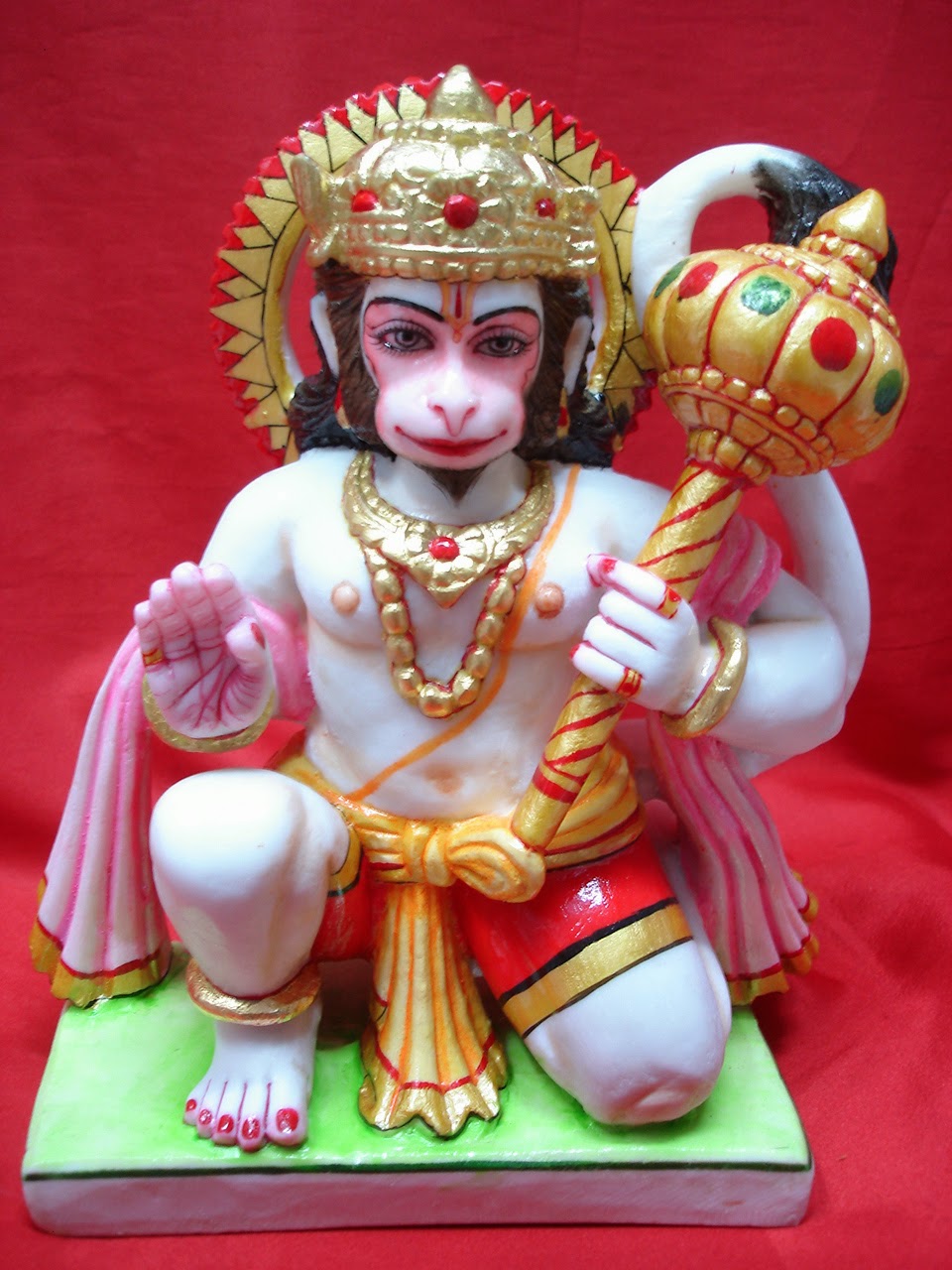Hanuman Jayanti or Hanumath Jayanti is celebrated to commemorate the birth of Hanuman, the Vanara god, widely venerated throughout India.
It is celebrated on the 15th day of the Shukla Paksha, during the month of Chaitra (the Chaitra Pournimaa).
A special feature of Hanuman Jayanti is that according to some religious almanacs (panchangs) the birthday of Shri Hanuman falls on the fourteenth day (chaturdashi) in the dark fortnight of the month of Ashvin while according to others it falls on the full moon day in the bright fortnight of Chaitra.
At that time the spiritual discourse is stopped and the offering of food (Prasad) is distributed to everyone.
He did what others could not do while serving Rama. He plunge with daring acts like crossing the ocean simply by uttering Ram-Nam, burning the city of Lanka, and bringing the sanjeevini herb and restoring Lakshmana to life again.
Hanuman is an ardent devotee of Lord Rama, and is worshipped for his unflinching devotion to the god. From early morning, devotees flock Hanuman temples to worship him.
According to the legend,once Lord Hanuman saw Goddess Sita applying sindoor on her forehead. On seeing this, Lord Hanuman enquired from her the reason for applying Sindoor.Goddess Sita replied that this would ensure a long life for her husband.
Hanuman then smeared his entire body with sindoor, in an effort to ensure Rama's immortality. So on this day, devotees visit temples and apply tilak of sindoor to their foreheads from the Hanumans body as this is considered to be good luck.
Hanuman Jayanti is an important festival of Hindus. Hanuman is the symbol of strength and energy. Hanuman is said to be able to assume any form at will, wield rocks, move mountains, dart through the air, seize the clouds and rival Garuda in swiftness of flight. He is worshipped in folk tradition as a deity with magical powers and the ability to conquer evil spirits.
The devotees visit temples and apply tilaka of sindoor to their foreheads from Hanuman's idol as Hanuman himself was of that color. A few thousand years before Ramayan time (in the latter part of Tretayuga - 2 million years ago), several divine souls came to Earth and modified the bodies of ape like creatures through evolutionary methods (genetic mutation) so that the animals could play the role of vehicles for these divine souls. That's how Vanara race with reddish orange color (hues of deep orange and light red) was established before the Ramayan time. Hanuman was born into this Vanara community and was in reddish orange color. So in all the Hanuman temples we see Hanuman colored in different hues of reddish orange color.


No comments:
Post a Comment